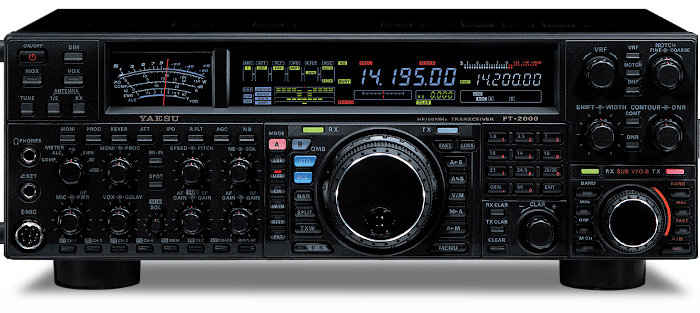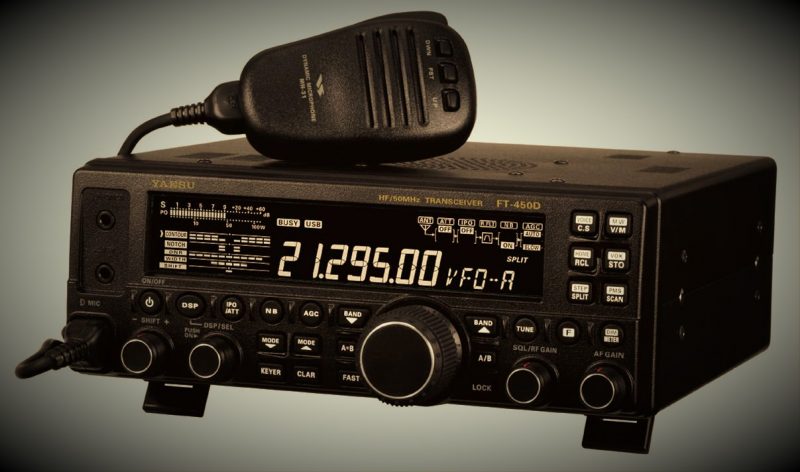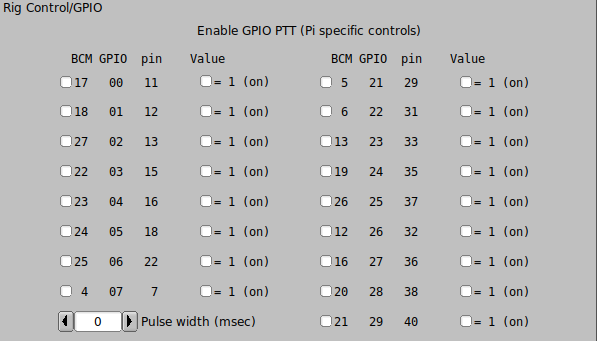

- BEST RIG CONTROL FOR FLDIGI YAESU FT 2000 DRIVERS
- BEST RIG CONTROL FOR FLDIGI YAESU FT 2000 WINDOWS 10
- BEST RIG CONTROL FOR FLDIGI YAESU FT 2000 WINDOWS
For the surface and v1.6, a dual USB-C PD to USB-C cable. For the Microsoft Surface go tablet or my Lenovo Yoga laptop I’m using a single USB-C from the Digirig v1.6, or Micro USB for the v1.5 Digirig cable between them. On the Raspberry Pi and Linux Ubuntu, the Audio interface just popped up, ready to use.Ĭonnections between the Digirig Mobile and your tablet or laptop are incredibly simple.

BEST RIG CONTROL FOR FLDIGI YAESU FT 2000 WINDOWS
So be certain you’ve done a windows update, before plugging this device in for the first time.
BEST RIG CONTROL FOR FLDIGI YAESU FT 2000 DRIVERS
Once those drivers updated, it was Plug and Play. On Windows 10, the drivers needed updating, through Windows update, before the device was recognized.
BEST RIG CONTROL FOR FLDIGI YAESU FT 2000 WINDOWS 10
So far I’ve tested this on Windows 10 with Lenovo Yoga laptop & Microsoft Surface, the Raspberry Pi 4, and a Linux Ubuntu laptop. In the next example image, I’m running two different radios, with one computer, two different modes. These persistent settings allow us to run multiple with multiple radios simultaneously on the same computer. This is also true for the com port, which remains consistent unless you change it. This means we are not setting up the interface every time it is removed then plugged into the computer again. The settings are saved independent of the computers own internal sound card. Moreover, the settings are saved even if the Digirig Mobile is unplugged, then plugged in again. Since the Digirig interface has an in-built audio card embedded, We won’t find ourselves transmitting OS notifications over the air. This generally remains true until something drastic happens with the station eg antenna change, coax change, … Small atmospheric changes also cause us to readjust audio I/O. To adjust incoming audio levels and waterfall gain, readjust input gain in OS audio settings for good decode, then fine-tune using RF gain, preamplifiers, … Levels are usually set once then never touched again. Next adjusted output gain slider in WSJT-X, JTDX, JS8Call, fldigi… to good ALC. Next, I adjusted the baseline audio I/O levels for the digirigs internal audio interface in OSs audio settings. This is something we have only seen with the XGGComm Digimode interface.Ī post shared by Julian OH8STN with other interfaces seen on the channel, I set up the audio input and output baseline levels on the radio to about 50%. What the Digirig does have is an in-built audio interface in addition to rig control. Unlike the Signalink, it has no external audio controls, which is fine by me. Digirig with Xiegu G90 Winlink with Xiegu x5105 and Digirig mobile with Surface Go 2įor those of you who have been around the channel since the beginning, this is roughly the size of a wolphilink interface. We’ll even give it a go with my Vertex Standard VX1210, once I make the cable. It’s also been working flawlessly with my Xiegu G90 and Yaesu FT-81x. In the above image, you see the Digirig mobile wired for the Xiegu x5105 and Lab599 Discovery TX-500. It supports most QRP radios requiring external audio and CAT control facilities. The Digirig mobile is an extremely small audio and rig control interface, with a single USB cable. The performance and benefits have been astonishing, to say the least.


The tests have run Winlink, JTDX, JS8Call, … with the Lab599 TX500, Xiegu G90, Xiegu X5105, and Yaesu ft-81x. For the past few months I’ve been testing the Digirig mobile mostly QRP with a Super Antenna MP1, 5 watts on a Surface Go 2. It is the smallest all-in-one audio and CAT control interface available today. They don’t understand when the audio interface is as big as the radio, we’re doing something seriously wrong! For this reason, I’ll take every opportunity available to promote products helping reduce system size, complexity and the wire mess. The big players like Tigertronics simply don’t understand the need for smaller, lighter all-in-one audio and CAT control interfaces. They don’t understand when the audio interface is as big as the radio, we’re doing something seriously wrong! Most of you already understand how needless wiring, weight, and mostly empty interface boxes annoy me to no end. We’ve seen the ZLP MiniproSC, XGGComms Digimode-4, the DRAWS Hat for the Raspberry Pi, and even made our own audio interface cables from time to time. We are always on the lookout for audio & CAT control interfaces offering pragmatic benefits for the off-grid, EMCOMM and field radio operator.


 0 kommentar(er)
0 kommentar(er)
